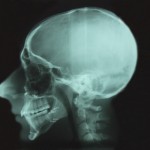
Orthodontic correction of malocclusion impacts on aesthetic concerns, oral function and patient’s psychological status. However around 5% of patients in the UK and USA are estimated to have more severe dentofacial deformities that require orthodontic-surgical treatment. These treatments are time consuming and resource intensive so estimating their impact on quality of life is an important consideration.
The aim of this review was to evaluate the impact of conventional combined orthodontic-surgical treatment (COST) and the surgery-first approach on oral health–related quality of life (OHRQoL).
Methods
Searches were conducted in the PubMed, EMBASE, Cochrane Central Register of Controlled Trials (CENTRAL), China National Knowledge Infrastructure (CNKI), ProQuest Dissertation and Theses, and System for Information on Grey Literature in Europe (SIGLE) databases with no restriction on language and publication date. Randomized controlled trials (RCTs), controlled clinical trials (CCTs) , and prospective cohort studies (PCS) that investigated the impact of combined orthodontic-surgical treatment on OHRQoL using validated instruments were considered.
Two reviewers independently screened selected studies and extracted data. Risk of bias for RCTs was assessed using the Cochrane domains-based tool and the Newcastle-Ottawa Scale (NOS) for non-randomised studies. Meta-analysis was conducted, and OHRQoL at different time points (before treatment, before surgery, 1-2 months after surgery, and 6 months after surgery) during conventional combined orthodontic-surgical treatment were statistically pooled and compared.
Results
- 24 studies (23 PCS, 1 RCT) involving 965 patients were included.
- Sample sizes ranged from 8 to 110.
- 12 studies used bilateral sagittal-split ramus osteotomy (BSSRO) ,9 used Le Fort I osteotomy, 7 of which adopted a combination of these 2 techniques. Seven studies simply described the surgery as single-jaw or bimaxillary, and the other 3 studies provided no details of the surgical approach.
- 19 of the cohort studies were considered to have a moderate risk of bias and 4 a high risk. The one RCT was considered to be at unclear risk.
- Meta-analyses indicates that
- Before treatment to before surgery there was a reduction of OHRQoL during the presurgical orthodontic treatment phase [ 2 studies].
- Before surgery to 1-2 months after surgery there was an improvement of OHRQoL [7 studies].
- 1-2 months after surgery to ≥ 6 months after surgery improvements of OHRQoL were found7 studies].
- There was also an improvement of OHRQoL from before treatment to ≥ 6 months after surgery [ 2 studies].
Conclusions
The authors concluded: –
For patients undergoing combined orthodontic-surgical treatment, the OHRQoL seems to decrease temporarily in presurgical orthodontic treatment compared with pre-treatment and to increase to a level better than it was before treatment during postsurgical orthodontic treatment. Based on the present review, combined orthodontic-surgical treatment could be an effective choice to improve OHRQoL for patients affected with severe dentofacial deformities.
Comments
The authors published the protocol for this review on the PROSPERO database and have undertaken an extensive literature search. 24 studies almost exclusively of a prospective cohort design were included with the authors taking a good methodological approach. Two main types of OHRQoL questionnaires were used, 14 used Oral Health Impact Profile (OHIP)-14 , one OHIP–49 and one OHIP-54 with 15 studies using the condition specific Orthognathic Quality of Life Questionnaire (OQLQ-22).
The findings are in line with what might be anticipated with a worsening of OHRQoL during the initial decompensation presurgical orthodontic stage following by increases in the early and 6 monthly post-surgical stage. However, there was substantial heterogeneity in the included studies and ony 2 studies included in the meta-analyses for before treatment to before surgery and before surgery to 6 months after surgery. The authors also highlight marked variation in the timings of OHRQoL assessment which may impact the findings.
Links
Primary Paper
Yi J, Lu W, Xiao J, Li X, Li Y, Zhao Z. Effect of conventional combined orthodontic-surgical treatment on oral health-related quality of life: A systematic review and meta-analysis. Am J Orthod Dentofacial Orthop. 2019;156(1):29–43.e5. doi:10.1016/j.ajodo.2019.03.008
